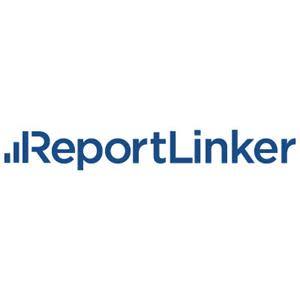Orthobiologics Devices And Equipment Global Market Report 2022

Major players in the orthobiologics devices and equipment market are Medtronic, Arthrex Inc, DePuy Synthes (A Subsidiary of Johnson & Johnson), Stryker Corporation, Zimmer Biomet, Bioventus LLC, Baxter International Inc, Integra Lifesciences Holding Corporation, Nuvasive INC, and Sanofi.
New York, May 13, 2022 (GLOBE NEWSWIRE) -- Reportlinker.com announces the release of the report "Orthobiologics Devices And Equipment Global Market Report 2022" - https://www.reportlinker.com/p06277231/?utm_source=GNW
The global orthobiologics devices and equipment market is expected to grow from $3.69 billion in 2021 to $4.02 billion in 2022 at a compound annual growth rate (CAGR) of 8.9%. The market is expected to grow to $5.32 billion in 2026 at a compound annual growth rate (CAGR) of 7.2%.
The orthobiologics devices and equipment market consists of sales of orthobiologics devices and equipment.Orthrobiologics devices are implants composed of cells and proteins naturally found in the human body that provides accelerated healing by stimulating efficient regrowth of musculoskeletal tissues including bones, cartilage, tendons, and ligaments.
They consist of tissues and bone replacement materials used for the recovery of ligaments, tendons, muscles, and bones.
The main products types of orthobiologics devices and equipment are demineralized bone matrix, synthetic bone substitutes, stem cell therapy, plasma-rich protein, viscosupplementation, bone morphogenetic protein, and synthetic orthobiologics.Stem cell therapy is promoting the repair response of diseased, dysfunctional, or injured tissue using stem cells or their derivatives.
The various applications involved are osteoarthritis and degenerative arthritis, soft-tissue injuries, fracture recovery, maxillofacial and dental applications, spinal fusion, trauma repair, and reconstructive surgery that are used by various end-users such as hospitals, orthopedic clinics, others.
North America was the largest region in the orthobiologics devices and equipment market in 2021.Western Europe was the second-largest region in the orthobiologics devices and equipment market.
The regions covered in this report are Asia-Pacific, Western Europe, Eastern Europe, North America, South America, the Middle East, and Africa.
The aging population profile of most countries contributed to the growth of orthobiologics devices and equipment market globally.According to the United Nations report, there were 962 million people aged over 60 across the globe, comprising 13% of the global population.
The population aged over 60 is expected to grow at a rate of about 3% every year.The report further estimated that Europe had the highest percentage of the population aged over 60.
The number of people globally over the age of 65 grew by 33%, according to estimates based on Population Reference Bureau data. The increase in the aging population has increased the patient pool of many orthopedic disorders and led to an increase in the demand for orthobiologics devices and equipment market.
Rising incidences of post-surgical complications in patients implanted with orthobiologics devices are one of the major restraints in the orthobiologics devices and equipment market.Surgical procedures with orthobiologics grafts, implants, and devices have become increasingly common in recent years.
Major postoperative complications include device failures, bleeding, postoperative infections, immune responses, and rejections.These procedures may develop post-surgery complications which refer to the development of any unwanted or unexpected conditions related to the device, graft, or implant.
These complications may vary with the type of procedure, implant, graft, or device, the experience of the surgeon, improper device testing procedures before market launch, device location in the body, and the health and biological response of the individual. The increasing post-operative complications and device failures can limit the orthobiologics devices and equipment market.
Biodegradable implants are increasingly being used in orthobiologics treatment and trauma orthopedic surgeries.Biodegradable implants are used to replace a missing biological structure, support a damaged biological structure, and enhance the existing bone structure.
Biodegradable products such as re-absorbable polymers composed of polyglycolic acid and polylactic acid manufactured in the form of plates, screws, and pins are replacing traditional devices like plates and screws which are more expensive.Surgeons are preferring biodegradable implants to replace conventional implants, as biodegradable implants can be engineered to provide temporary support for bone fractures, can degrade at a rate matching new tissue formation, eliminate the need for the second surgery, and are highly useful in fracture fixation in children with less implant-related infections.
For instance, Stryker Corp. offers orthobiologics such as bone repair biodegradable products that are used in bone regeneration and bone healing, soft tissue regeneration, and muscle connection to bone
Regulatory changes are likely to lead to increased costs relating to new product development and supply of orthobiologics devices.These changes are related to customer data protection such as the European Union’s General Data Protection Regulation (GDPR), changes to equipment approval procedures, and other regulatory changes.
The GDPR is an EU law on the data protection and privacy of individuals residing in the European Union and the European Economic Area (EEA).It also regulates the export of personal data outside the EU and EEA areas.
Additionally, the FDA is requesting more clinical data to support claims, therefore increasing the time to process 510(k)s by over 55% over the last decade.In November 2017, the USFDA has announced a comprehensive regenerative medicine policy framework to facilitate innovation.
This policy deals with the manufacture of tissues, human cells, and cellular and tissue-based products other procedures to prevent the introduction, transmission, and spread of communicable diseases. Orthobiologics such as stem cell therapies are approved through this framework. The potential loss of revenue due to delays in product release, additional costs incurred by the time-consuming approval processes, and changing regulations puts a strain on investments relating to orthobiologics devices development.
The counties covered in the orthobiologics devices and equipment market are Brazil, China, France, Germany, India, Indonesia, Japan, South Korea, Russia, UK, USA, and Australia.
Read the full report: https://www.reportlinker.com/p06277231/?utm_source=GNW
About Reportlinker
ReportLinker is an award-winning market research solution. Reportlinker finds and organizes the latest industry data so you get all the market research you need - instantly, in one place.
__________________________
CONTACT: Clare: clare@reportlinker.com US: (339)-368-6001 Intl: +1 339-368-6001


 Yahoo Finance
Yahoo Finance 
